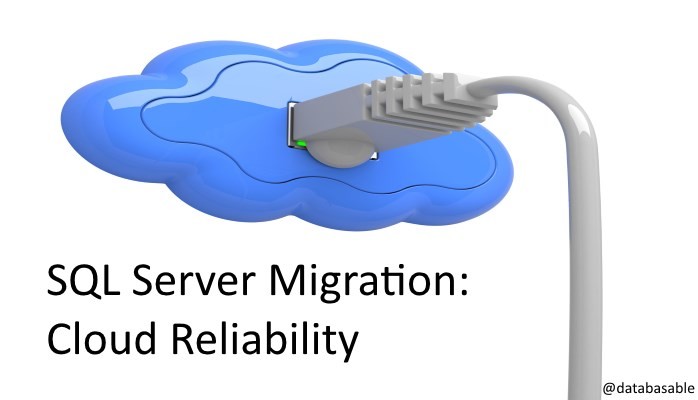
Migrating SQL Server to the Cloud - Part 6
This is the penultimate in a series of blog posts about SQL Server and the cloud (here you can read one, two, three, four & five).
If you are considering moving your databases to the cloud, then you probably should be thinking about the reliability and SLA of your chosen cloud vendor, obviously there is no point migrating to the cloud if it's less reliable than your existing setup. Unless of course you are looking to get fired for incompetence!
Fortunately, the main cloud vendors are reliable. In fact they all have the same Service Level Agreements of "at least 99.95%, however the refund amount that each provider offers in case of an outage does vary slightly.
So it's time for some numbers (or if you want to skip the next 3 lines, just be aware that you get money back if they fail to meet the SLA!)
AWS - You get a 10% credit if less than 99.95% but equal to or greater than 99.0% and a 30% credit if less than 99%.
GOOGLE - You get a 10% credit if less than 99.95% but equal to or greater than 99.0%, 25% credit if less than 99% but equal to or greater than 95% and 50% credit if less than 95%.
AZURE - You get a 10% credit if less than 99.95% but equal to or greater than 99.0%, 25% credit if less than 99%
If you are better at mathematics than I am you will already know this, but an SLA level of 99.95% availability gives following periods of potential downtime/unavailability:
- Daily: 43.2s
- Weekly: 5m 2.4s
- Monthly: 21m 54.9s
- Yearly: 4h 22m 58.5s
As stated above all the vendors state that their SLA is "at least 99.95%", but how did they actually perform last year?
According to CloudHarmony, which monitors these statistics and keeps the cloud vendors honest, the number of hours of downtime for 2014 were as follows:
Microsoft Azure: 39.77 hours
Google Cloud: 4.46 hours
AWS: 2.41 hours
So Microsoft missed their target of 99.95% by quite a lot. Google narrowly missed it and AWS exceeded it.
So not exactly five-nine territory, but when you think about the size and number of the data centers that Google and AWS are managing they are still mightily impressive statistics, which over time will no doubt improve even more. Whereas Mr Gates needs to up his game!
Next week is the final part of this blog series and we'll take a look at just how much it costs to host your servers in the cloud with AWS, Google and Microsoft.
Until then, enjoy your week and remember to check out the other posts in this series (one, two, three, four & five).
Find out how databasable can help you move into the cloud: http://www.databasable.com

